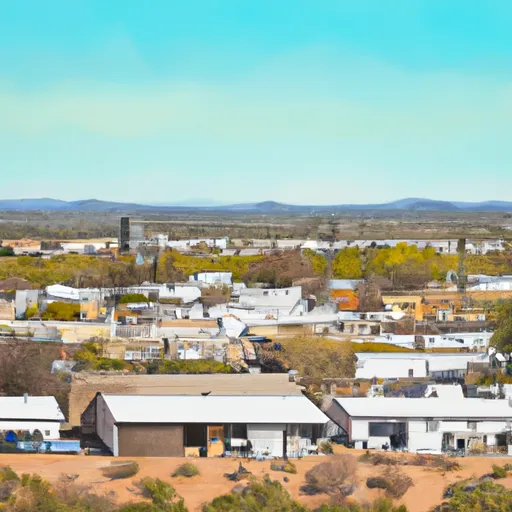-
 Snoflo Premium
Snoflo Premium
Get unlimited access to all our content
With no Ad interruptions! - Start Your Free Trial Login with existing account
Somerton
Eden Index
Climate
6.9
•
Recreation
4.9
•
Community
1.4
•
Safeguard
4.8/10

Somerton, Arizona is a small city located in Yuma County. It has a semi-arid climate characterized by hot summers and mild winters. Summers are long and extremely hot, with temperatures often exceeding 100°F (38°C), while winters are mild and temperate, with average temperatures ranging between 60°F (15°C) and 70°F (21°C). The region receives minimal rainfall, with most precipitation occurring during the monsoon season from July to September.
Hydrologically, Somerton lies in the Lower Colorado River Basin and is influenced by the Colorado River. The area relies heavily on irrigation for agriculture, with the Gila River being a crucial water source. The region also experiences issues related to water scarcity due to its arid nature.
Outdoor recreation opportunities in Somerton and its surrounding areas include exploring the nearby Kofa National Wildlife Refuge, where visitors can engage in activities such as hiking, camping, and wildlife viewing. The nearby Colorado River provides opportunities for boating, fishing, and water sports. Additionally, the Cocopah Speedway offers exciting racing events for motorsport enthusiasts.
What is the Eden Index?
The Snoflo Eden Index serves as a comprehensive rating system for regions, evaluating their desirability through a holistic assessment of climate health, outdoor recreation opportunities, and natural disaster risk, acknowledging the profound impact of these factors on livability and well-being.
Climate Health Indicator (CHI): 6.9
Somerton receives approximately
93mm of rain per year,
with humidity levels near 46%
and air temperatures averaging around
23°C.
Somerton has a plant hardyness factor of
10, meaning
plants and agriculture in this region tend to thrive here all year round.
By considering the ideal temperature range, reliable water supplies, clean air, and stable seasonal rain or snowpacks, the Climate Health Indicator (CHI) underscores the significance of a healthy climate as the foundation for quality living.
A healthy climate is paramount for ensuring a high quality of life and livability in a region, fostering both physical well-being and environmental harmony. This can be characterized by ideal temperatures, reliable access to water supplies, clean air, and consistent seasonal rain or snowpacks.
Weather Forecast
Streamflow Conditions
Lower Colorado
Area Rivers
Lower Colorado
Snowpack Depths
Lower Colorado
Reservoir Storage Capacity
Lower Colorado
Groundwater Levels
Recreational Opportunity Index (ROI): 4.9
The Recreational Opportunity Index (ROI) recognizes the value of outdoor recreational options, such as parks, hiking trails, camping sites, and fishing spots, while acknowledging that climate plays a pivotal role in ensuring the comfort and consistency of these experiences.
Access to outdoor recreational opportunities, encompassing activities such as parks, hiking, camping, and fishing, is crucial for overall well-being, and the climate plays a pivotal role in enabling and enhancing these experiences, ensuring that individuals can engage in nature-based activities comfortably and consistently.
Camping Areas
| Campground | Campsites | Reservations | Toilets | Showers | Elevation |
|---|---|---|---|---|---|
| Buttercup OHV | None | 162 ft | |||
| Ogilby Rd Dispersed | None | 359 ft | |||
| Grays Well OHV | None | 163 ft | |||
| Midway  OHV | None | 195 ft | |||
| Picacho State Rec Area | 58 | 265 ft |
Nearby Fishing
Nearby Ski Areas
Catastrophe Safeguard Index (CSI):
The Catastrophe Safeguard Index (CSI) recognizes that natural disaster risk, encompassing floods, fires, hurricanes, and tornadoes, can drastically affect safety and the overall appeal of an area.
The level of natural disaster risk in a region significantly affects safety and the overall livability, with climate change amplifying these risks by potentially increasing the frequency and intensity of events like floods, fires, hurricanes, and tornadoes, thereby posing substantial challenges to community resilience and well-being.
Community Resilience Indicator (CRI): 1.4
The Community Resilience Indicator (CRI) recognizes that education, healthcare, and socioeconomics are crucial to the well-being of a region. The CRI acknowledges the profound impact of these elements on residents' overall quality of life. By evaluating educational resources, healthcare accessibility, and economic inclusivity, the index captures the essential aspects that contribute to a thriving community, fostering resident satisfaction, equity, and social cohesion.

